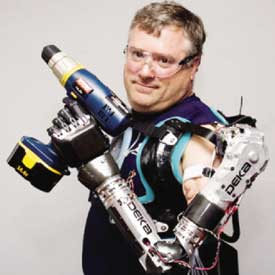A big thanks to Eric Robertson for his invitation to join this blog. For my inaugural post here at ptthinktank.com I thought I’d share a little fictional scenario that is probably a little too close to reality. Comments are welcome.
First allow me to set the stage..
A handsomely dressed Mr. Smith from Acme Health Insurance Network enters the office to meet with physical therapist Dr. William Jones to discuss the opportunity for Dr. Jones to join their insurance network. Imagine, they are sitting across from each other at Dr. Jones’ office desk and here is what the conversation might sound like.
Mr. Smith: “Good afternoon Mr. err… I mean Dr. Jones. As you know I am here to discuss the opportunities you will enjoy by joining our provider network. As you know we are the largest insurer in our state and our network of providers is the largest in the state as well.”
Dr. Jones: “So, what kind of opportunities and advantages would I enjoy as a provider in your network?”
Mr. Smith: “Well as I mentioned, we are the largest insurer and provider network in the state and if you were to join our network, you would enjoy network access to the largest base of insured in the state”.
Dr. Jones: “Well that’s great! Would I have any kind of any kind of exclusive geographic rights to my particular catchment area?”
Mr. Smith: “Well not exactly, as we are signing up as many providers in your area as possible so that we can provide the largest provider network for our subscribers, but you will be listed among them in our provider directory and I’m sure there will be more than enough patients to go around.”
Dr. Jones: “Ok, I understand that. Well let me ask you this question. If I join your network, will I be paid more than I am now as an out of network provider?”
Mr. Smith: “No, I’m sorry you will not, but you will have access to our large subscriber base which might help to offset the difference.”
Dr. Jones: “Ok… Well, will I get paid at least the same as I am now?”
Mr. Smith: “Well not exactly… You see we have a daily per diem max allowance that is well…. not quite as much as you receive now.”
Dr. Jones: “Well what do you mean by ‘not quite as much’?”
Mr Smith (nervously smiling): Well actually… it is about 50% of what you would receive now if the patient had out of network benefits. But remember not all of our patients have that benefit so you would would have an opportunity to serve more patients”.
Dr. Jones (slightly exasperated): “Ok, well let me ask you then if my paper work demands would be lessened by being in network at least?”
Mr. Smith (now looking a little sheepish and a little more nervous smiling): “Well… not really. You see we actually would have additional paperwork for you to fill out since all of the patients would have to have their care authorized.”
Dr. Jones (even more exasperated): “So when I submit my plan of care, it needs to be authorized but that would be all that is necessary for the entire duration of care?”
Mr. Smith (a slight sheen of perspiration now visible on his forehead and upper lip): “Well…. not exactly… We will actually only authorize a portion of the plan of care and then will consider any remaining care after a further evaluation and assessment of a new plan of care.”
Dr. Jones (chuckles but obviously aggravated): “Ok, well let me ask you this… I will get treated better by you all as a network provider so that when my staff calls to verify benefits, my call will get handled directly and they won’t have to wait on hold for 20 minutes or longer?”
Mr. Smith (slinking down in his chair and plainly nervous and maybe even a little embarrassed): “Well… not exactly… Everyone uses the same phone number. But you can use our Internet based system..”
Dr. Jones (back straightened and standing up leaning forward across the desk in obvious disgust): “Oh you mean the online system that is either kind of permanently ‘temporarily offline’ or so far out of date the information is unreliable?”
Mr. Smith (slumped down in a semi-cowering pose, sweating profusely): Well… yeah kinda… But! You do have access to the largest network of insured lives in the state!”
Dr. Jones (standing upright, near his office door): “Well Mr. Jones, thanks for coming in and enlightening me as to the strategic benefits of being a member of your network, but I’m not sure I can afford the privileges of being an honored member of your network. I’ll have to get back to you on your generous offer.

 Dean’s DEKA Arm is being developed as part of the DoD”s
Dean’s DEKA Arm is being developed as part of the DoD”s  American Physical Therapy Association (APTA) President, Scott Ward, posed an interesting question in
American Physical Therapy Association (APTA) President, Scott Ward, posed an interesting question in Augusta, Georgia is unique for a number of reasons. Perhaps you notice the heaping piles of azaleas, or that golf course, or the downtown with much character and few people. Perhaps you notice that the city is “well laid out with wide and spacious streets”, as
Augusta, Georgia is unique for a number of reasons. Perhaps you notice the heaping piles of azaleas, or that golf course, or the downtown with much character and few people. Perhaps you notice that the city is “well laid out with wide and spacious streets”, as  In conjunction with the Special Olympics
In conjunction with the Special Olympics